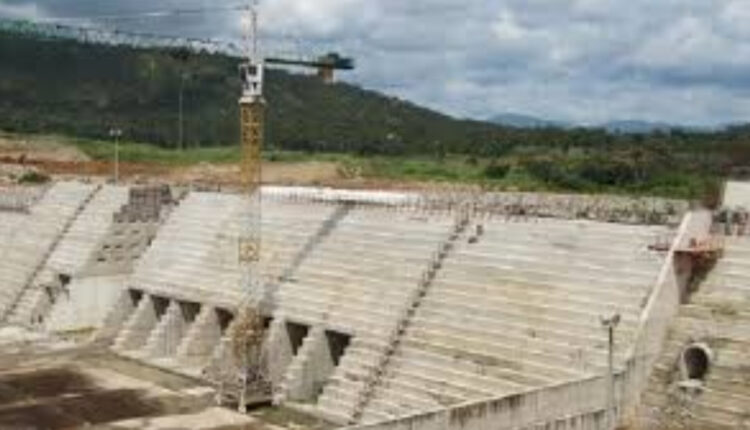The Testimonies And The Metaphors Of The Mambilla Trials
By Fatai J. Yinus
The testimonies of the two former Nigerian presidents which impacted negatively against Nigeria at the Arbitration in France reminds us of Sigidi in traditional cultures
In early February 2024, when the trial of the former Minister of Power, Dr. Agunloye resumed sitting, after his arraignment on seven charges, before Justice Jude Onwuegbuzie at the FCT High Court in Apo near Abuja, the court exuded the determination to dispose of the case quickly. But the defence team thought otherwise and raised a preliminary objection. The defence told the court that their client did not commit any financial crime, and as such, EFCC was not in a position to try him.

The court considered this preliminary objection but ruled against it by mid-May 2024 insisting that a financial crime was indeed involved because the 2003 contract attracted a bribe in 2019, over sixteen years after when the former Minister had ceased to be a public officer. The defence screamed to the Appeal Court, saying that the same judge that was to establish whether or not the three payments totalling N5m paid to Dr. Agunloye between August and December 2019 were bribes for the 2003 BOT contract had not even started the trial but had already issued a ruling based on its anticipated outcome of the trial. The appeal was filed at the Appeal Court in May 2024 and is still pending before it.
Notwithstanding the pending appeal, the substantive case at the High Court has proceeded and did not stop. The prosecution presented two witnesses who were shot down during cross-examinations, necessitating EFCC to seek the court’s approval for an amendment of their charges on retroactive bribes. The court granted the amendment, and Dr Agunloye was re-arraigned in early February 2025.
However, on 24 February 2025, when the court was scheduled to enable EFCC to present the third of their listed eight witnesses, the defence team were stunned upon arrival at the Court. Lawyers and men who arrived in the court early met the courtroom in a disorganised state like a demolition site. As the early comers gathered at the shattered courtroom wondering what happened and where the court sessions had shifted to, a court official came and explained that the courtroom roof had unexpectedly collapsed and that new court schedules will be communicated later. An elderly Senior Advocate Nigeria of Igbo extraction who was there turned to the Mambilla Defence lawyers and said: “I have been following your Mambilla Trial. The roof of the case against your client has just collapsed. The bottom of the case collapsed a long time ago.” The lawyers exchanged banters and left the broken court premises. The Mambilla Trials would commence from the week starting 3rd of March 2025 after the collapsed roof of the courtroom would have been repaired.
The simple jocular conversation between the lawyers raised a number of questions amongst the journalists present. Could the collapse of the roof of the courtroom be a metaphor for the “collapse of the roof of the Mambilla case”? At which stage did the bottom of the Mambilla case collapse? Was it when the court borrowed one or two paragraphs from an anticipated ruling in a case that was yet to be started that the three payments of 2019 were bribes for the BOT contract awarded in 2003? Or was it when the ruling against the preliminary objection was challenged at the Court of Appeal? Or was it when testimonies of the two former Nigerian presidents impacted negatively against Nigeria at the Arbitration in France? This latter is of great significance, and it immediately brings the case of Sigidi to the fore.
Sigidi is a traditional Yoruba spiritual messenger with a ritualistic ability to connect with powerful spiritual forces of gods, the Orisas. They act as a modern-day robot connecting between humans and the spirits in Yoruba culture. That brilliant scholar, poet, dramatist, author, and professor of literature, Dr Kole Omotoso, explained sometime in 2015 that Sigidi is an image of the human torso with eyes, nose and mouth clearly marked out. It is made out with clay or usually mud. Sigidi serves its master without any question and without any hesitation. But sometimes, Sigidi out of playfulness asks to be exposed to the rain, forgetting that it was made of mud.
It is noteworthy that the concepts, usefulness and characteristics of Sigidi are well embedded into the culture of the Yoruba, the Igbo or other ethnic nationalities, and the possible forgetfulness that could make Sigidi unconscious of the possibility of its self-destructiveness is also well known. This playfulness and forgetfulness of the Sigidi must be what led the high-profile statesmen from Nigeria, under the guise of giving testimonies, to go in the pouring rains of the French International Arbitration Court in Paris in January 2025, and they were washed down.
But Sigidi has been settled for as the Yoruba word for ‘robot’ as can be seen in Fakinlede’s Yoruba Dictionary. With this, the Yorubas have armed themselves ready to participate in the new knowledge ventures, the nascent technological race and can delve into what ethics should govern the actions of awon sigidi (plural for sigidi) in their interaction between themselves and between them and humans. Robots have the ability to create other robots, and sigidi will need to enhance self-construction and capabilities in accordance with the limits established by Isaac Asimov’s laws for robots. The new sigidi must be cast with porcelain surface or other vitrified surface to withstand water whenever they playfully want to get into the rains, or their controllers have assignments that must take them through the rains. That way, the sigidi could deliver their messages, useful or otherwise, but without dissolving into nothingness.
Fatai J. Yinus. Abuja
1 March 2025

